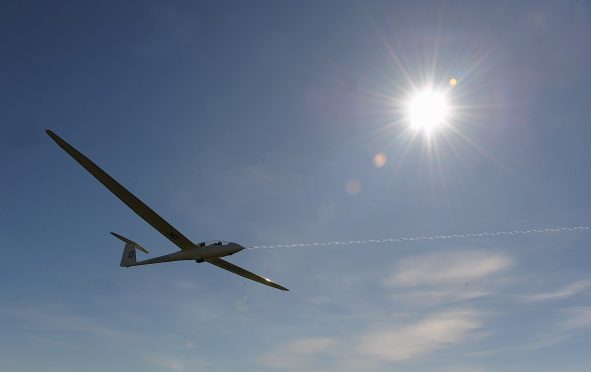Recreational flyers have claimed their safety could be put at risk if Inverness Airport is granted controlled airspace for a huge tract of Highland sky.
Highlands and Islands Airports Ltd (Hial) want to become the fifth airport in Scotland to have control of what traffic is allowed to use the sky in the area around it.
A consultation for the plans will close on Sunday before a final submission is made to the Civil Aviation Authority.
But local gliding clubs have objected to the plans – claiming that the project could make the skies around Inverness a “no-go” zone for small flyers.
A Moray flying group have also warned that safety of smaller craft could be put at risk if they are forced to fly in areas where they cannot land to avoid the controlled airspace.
Hial are seeking to upgrade their control of the airspace to Class D which would mean all aircraft operating to area stretching around 30 miles from Dalcross would need to be cleared with air traffic control before entering.
At present Inverness operates in Class G or uncontrolled airspace.
In their submission against the plans, Cairngorm Gliding Club warn that “experience in the rest of the UK over many years has clearly demonstrated that Class D becomes an effective no-go area to gliders”.
Nick Norman from the club said that the plans would also curtail cross-country gliding as they would not be able to fly high enough to stay out of the controlled airspace.
He said: “The primary justification for the new airspace seems to be an economic one.
“In other words Hial desire to make profit for its shareholders by ‘grabbing’ a huge amount of airspace to have under their control.”
He equated the proposal to a bus company asking for all cars to be taken off the road to increase safety for drivers.
Highland Gliding Club based near Elgin also objected, saying the changes could put flyers’ safety at risk.
Chairman Robert Tait said: “We have tried engaging with the consultant at meetings but have been ignored in the consultation documents.
“Class D airspace for us is the nuclear option that will force us to have to operate over unlandable terrain for longer therefore increasing the risk to our pilots.”
A Hial spokesman said they are committed to listening to the views of people about proposed operational changes.
He said: “The ambition here is to deliver a proportionate sector of controlled airspace around the airport where aircraft in the area are required to inform air traffic control at Inverness of their intentions and that will ensure we maintain levels of safety and enhanced operational efficiency for all airspace users.
“We are encouraging people to go to the HIAL website and share their views before we submit our proposals to the Civil Aviation Authority for their approval.”
